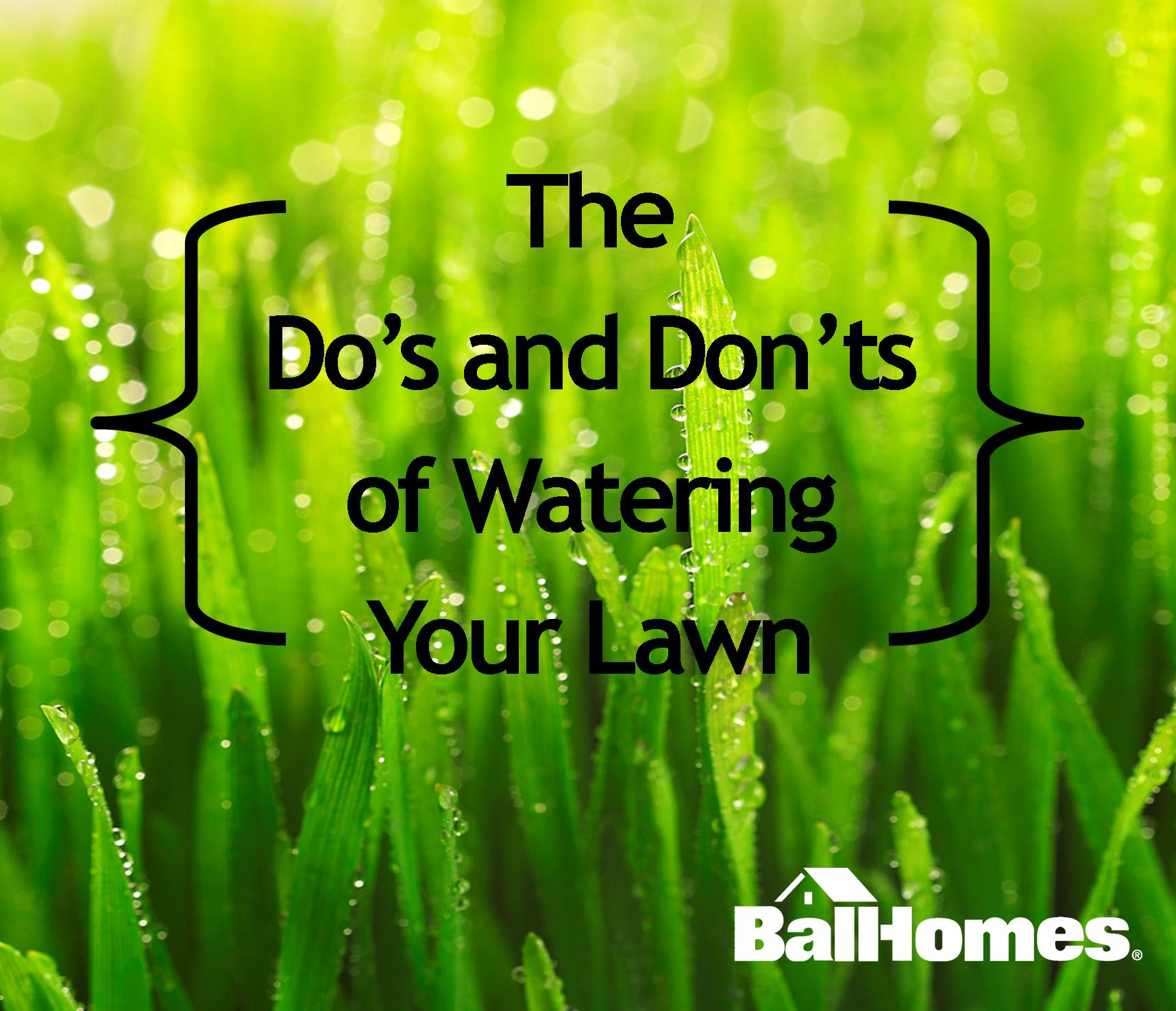Thursday, July 10, 2014
Summer is in full swing! We've had some pretty toasty days in our area over the past few weeks and as the dog days of summer approach, it's only going to get hotter and humid. As the temperatures rise, so does the need to keep your lawn well watered. But, instead of just sticking a sprinkler in the middle of your yard and hoping for the best, here's some tips on the right way to water your lawn.

1. Water Your Grass Only When It Needs It
If you don't water your lawn correctly, you could run the risk of under or overwatering your lawn, which could contribute to the development of fungus and disease. Some types of grass require more water than others, and environmental factors such as temperature, humidity, and wind can dramatically affect how frequently you need to water your lawn. Fortunately, the most accurate way to determine whether your lawn needs water is also the easiest: just look at the grass:
·When grass needs water, it will begin to take on a blue-gray tint, and the older leaf blades on the plant will begin to curl up or wilt.
·Footprints will remain on the grass for longer than usual, as the grass won't "bounce back."
When 30 to 50% of your lawn shows these symptoms, it's time to water.
2. Know When To Water
The time of day that you water is just as important as how much you water. Early in the morning is the ideal time to water for most lawns. There's less wind, less hot sun, and your lawn has a full day to dry. Watering at night invites mildew and fungus. In the hot afternoon, much of your water can be lost to wind and evaporation.
3. Water Evenly
Sprinklers are finicky. They don't always put water down equally. To make sure water is going where it's supposed to, place a few empty soup cans around your lawn, and run your sprinkler for about 20 minutes. If water collects evenly in the cans, you know your sprinkler is doing its job.
4. How Long Is Long Enough?
Your lawn needs about 1-2 inches of water per week. Each time you water, you should aim for the water to absorb about 6 inches into the dirt to make sure that the roots of the grass are well hydrated. How long that will take depends on the slope of your yard, weather conditions, and various other factors. The best way to tell is to water your lawn for about 20-30 minutes. After that time, turn off the water and stick an 8-inch screwdriver into the ground. If it goes in easily, you're done. If not, you need to water some more.
5. Know When to Stop Watering
You can water carefully and properly, but if the water isn't absorbed, your efforts are wasted. Watch out for water running off the grass and into your driveway or street. If that happens, turn off the sprinklers and let your lawn absorb the water for about 20-30 minutes before turning back on again. And this goes without saying, but aim your sprinklers to water just the lawn. That's the part that needs the moisture—not the sidewalk or street! Slight adjustments to your sprinklers can save a lot of water. Ideally, you shouldn't water your sidewalk, patio, street, or driveway at all.